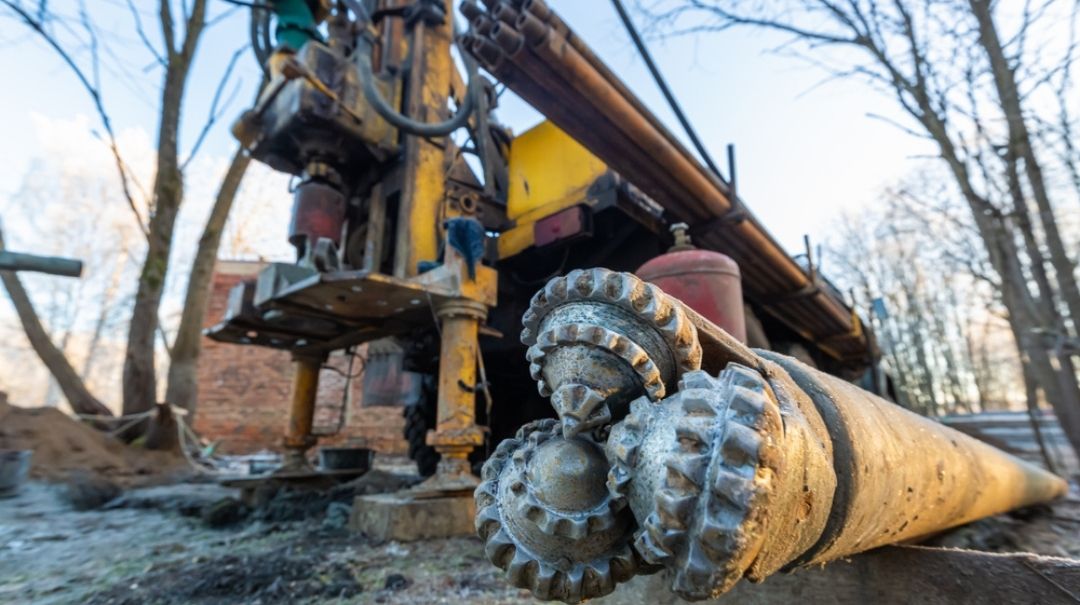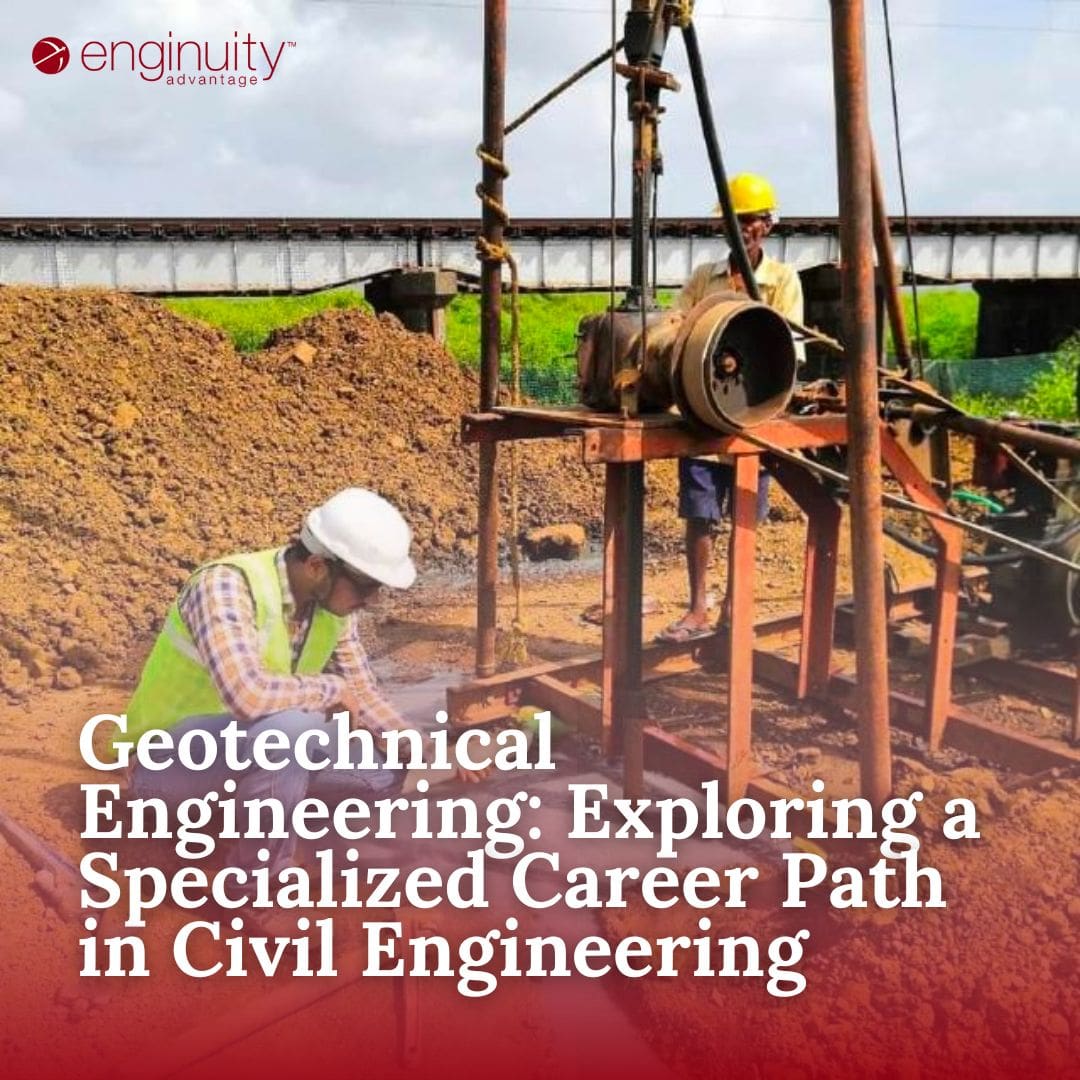Discovering the Best Geotechnical Companies in South Africa: Secret Considerations
Wiki Article
The Value of Geotechnical Design in Dealing With Ecological Obstacles and Enhancing Construction Security
Geotechnical design serves as a foundation in the junction of ecological stewardship and construction security, supplying critical understandings right into the behavior of soil and rock under numerous conditions. This self-control not just addresses pushing environmental difficulties such as dirt erosion and groundwater security yet additionally enhances the toughness of framework against natural dangers. By implementing tactical site investigations and tailored reduction steps, geotechnical designers play a vital function in securing both human lives and eco-friendly integrity. Yet, the intricacies of these obstacles elevate essential concerns regarding the future direction of this field and its implications for sustainable growth.
Function of Geotechnical Engineering
Geotechnical engineering plays an important duty in the style and construction of infrastructure by dealing with the habits of soil and rock products under different problems. This field of design is essential for recognizing the interaction between frameworks and the ground, which includes determining the load-bearing capability of dirt, examining security, and anticipating possible settlement or failing.Geotechnical engineers are responsible for conducting site examinations, which include sampling and testing dirt and rock to gather information on their chemical and physical residential properties. This information is crucial for making foundations, preserving walls, and other earth-retaining frameworks that ensure security and long life. Additionally, geotechnical engineering notifies the option of suitable building and construction methods and materials, therefore minimizing dangers connected with dirt behavior.
Moreover, the integration of geotechnical engineering principles into urban preparation and environmental administration is vital for addressing challenges such as ground contamination and groundwater monitoring. By understanding geotechnical elements, engineers can develop sustainable services that improve the durability of facilities against all-natural dangers, while additionally advertising ecological stewardship. Inevitably, the function of geotechnical design is vital for attaining safe, resilient, and environmentally conscious construction methods.
Soil Erosion Mitigation
Dirt disintegration positions a considerable risk to both environmental stability and infrastructure stability, influencing roughly 24 billion lots of fertile dirt shed each year worldwide. This sensation is worsened by factors such as deforestation, urbanization, and bad farming practices. Geotechnical engineering plays a crucial function in creating efficient dirt disintegration reduction strategies that protect both the setting and construction projects.One method entails the application of disintegration control approaches such as greenery planting, which supports soil via root systems. Furthermore, the building and construction of retaining walls and balconies can successfully decrease surface overflow and protect prone areas from erosion. Correct drainage design is likewise essential; it minimizes water buildup and guides excess runoff far from important structures.
Additionally, geotechnical engineers utilize soil stabilization techniques, such as the application of geotextiles and naturally degradable mats, to enhance soil communication and stop destruction - geotechnical engineer description. Regular tracking and assessment of erosion-prone websites make it possible for prompt treatments, making sure lasting sustainability. By integrating these methods, geotechnical design not only mitigates the influences of dirt disintegration yet likewise adds to the resilience of framework against ecological difficulties, inevitably cultivating a safer and extra lasting constructed atmosphere
Groundwater Protection Strategies
Groundwater offers as a vital resource for drinking water, farming, and commercial processes, making its defense crucial for environmental sustainability and public health. Reliable groundwater security strategies are essential in alleviating contamination threats and guaranteeing the durability of this resource.
Routine surveillance of groundwater high quality is additionally essential, allowing very early discovery of contamination sources and assisting in prompt removal efforts. Utilizing innovative technologies, such as geophysical studies and remote noticing, help in determining prospective threats to groundwater reserves.
Additionally, public education and learning and stakeholder engagement are essential, cultivating area support for groundwater security campaigns. geotechnical engineer description. By integrating governing measures, technological improvements, and community involvement, we can create a detailed structure that safeguards groundwater sources while promoting lasting advancement and building and construction techniques
Landslide Risk Administration
Landslides present considerable about geotechnical engineering dangers to both human safety and security and framework, making effective risk administration approaches important. Geotechnical engineering plays a critical duty in identifying, assessing, and mitigating landslide risks. An extensive understanding of slope security, dirt technicians, and hydrology is essential for creating reliable risk management plans.The very first step in landslide danger administration involves comprehensive site investigations, which consist of geological mapping and dirt screening. These examinations help designers review the possibility for landslides by recognizing crucial elements such as slope angles, soil make-up, and water content. Using advanced technologies such as remote picking up and geophysical studies can improve the accuracy of these evaluations.
When threats are determined, ideal mitigation measures can be implemented. These might consist of design options such as keeping walls, water drainage systems, and incline stabilization strategies. Keeping track of systems need to be established to detect signs of ground activity and modifications in water degrees, permitting for proactive treatments.

Enhancing Building Safety And Security
Building and construction websites often provide a myriad of dangers that can threaten employee safety and project stability. Geotechnical engineering plays an essential role in enhancing construction security by supplying necessary understandings right into subsurface problems. Via comprehensive soil and rock analysis, geotechnical engineers can identify potential threats, such as dirt instability, groundwater problems, and seismic vulnerabilities, which may compromise the safety and security of building and construction tasks.Implementing geotechnical remedies, such as correct structure design and the usage of maintaining frameworks, alleviates these dangers substantially. These services not only make certain the security of the structures being built yet likewise create a safer working environment for building and construction employees. Furthermore, extensive monitoring and analysis of website problems throughout the building process are essential. Utilizing sophisticated technologies like ground-penetrating radar and inclinometer systems makes it possible for real-time information collection, enabling timely treatments when risks are identified.
In addition, promoting a society of safety and security via training and adherence to developed security procedures further improves building and construction site safety and security. By integrating geotechnical know-how right into the planning and implementation phases, construction tasks can attain greater security criteria, inevitably safeguarding employees and making sure effective job completion.
Final Thought
To conclude, geotechnical engineering works as a crucial self-control in advertising and dealing with environmental obstacles construction safety and security. Through effective soil erosion reduction, groundwater defense strategies, and landslide danger management, geotechnical engineers contribute to the development of durable infrastructure. The integration of these techniques promotes a safer building and construction atmosphere and improves the sustainability of civil design tasks. Inevitably, the proficiency of geotechnical designers is vital in securing both natural sources and human lives against potential hazards.Geotechnical design offers as a foundation in the intersection of environmental stewardship and building and construction safety, supplying vital understandings into the behavior of dirt and rock under different problems. Geotechnical design informs the choice of appropriate building approaches and materials, consequently decreasing risks linked with soil actions.
Geotechnical design plays a critical function in creating effective soil erosion reduction strategies that guard both the atmosphere and construction tasks.
Moreover, geotechnical engineers employ dirt stabilization methods, such as the application of geotextiles and biodegradable mats, to boost soil communication and avoid degradation. Via extensive dirt and rock analysis, geotechnical engineers can determine prospective dangers, such as soil instability, groundwater problems, and seismic susceptabilities, which might jeopardize the safety and security of construction tasks.
Report this wiki page